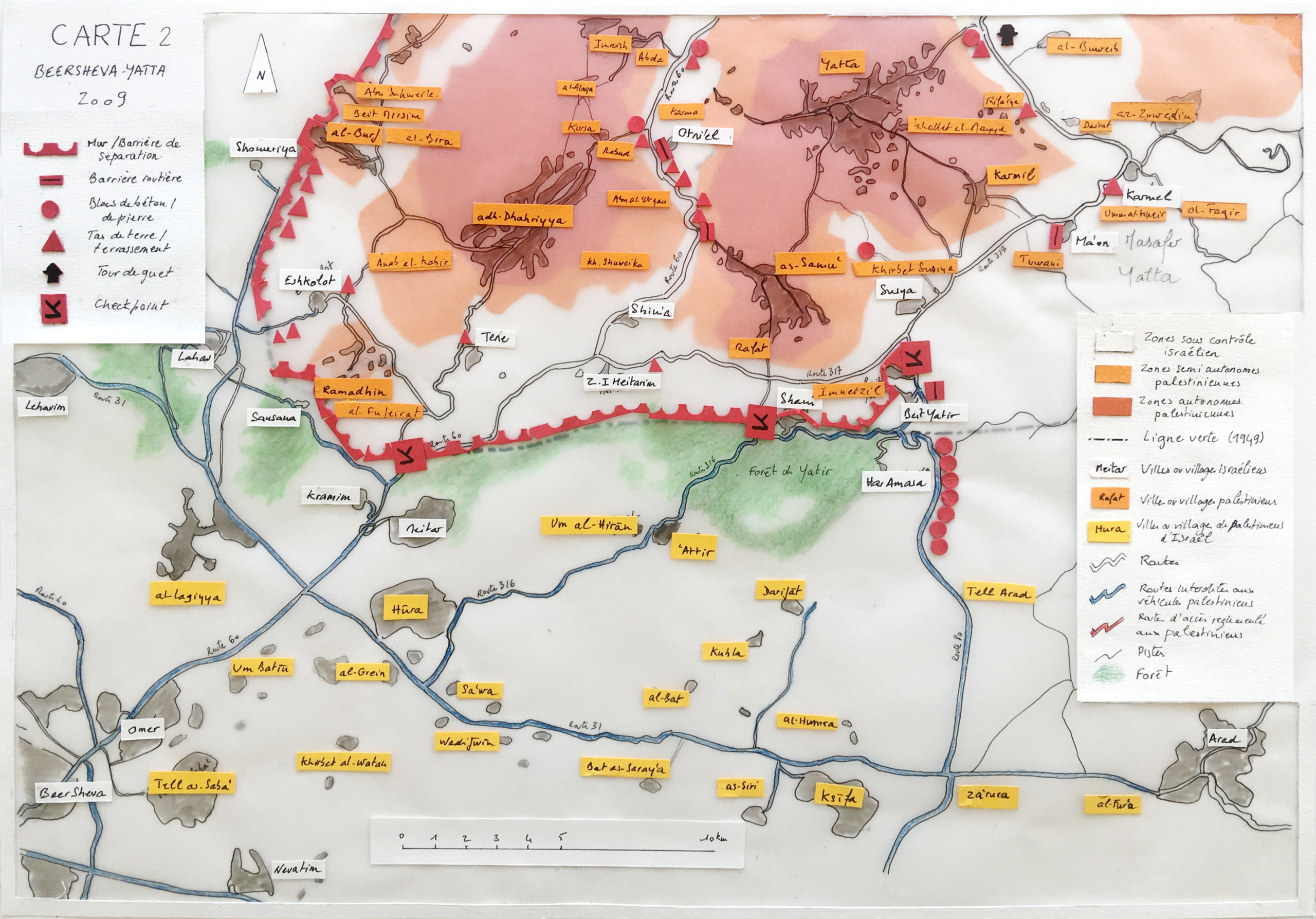In the last two decades, the history of the Jewish family has been at the center of a number of studies that have – in the light of a more general historiographical evolution – considerably renewed the subjects and perspectives of this field of research. In this context that made the Jewish studies a well distinguished discipline, we wish to focus on an aspect that has never been studied systematically and has never been subject to a methodological and comparative synthesis: the patrimonial transmission.
What is at stake here, are multiple issues: Because of its complexity and the multiplicity of its dimensions (legal, socio-economic, cultural and religious, anthropologic), heritage can be considered as a central element and a key to understand phenomena of social reproduction and the functioning of Jewish societies that are sometimes highly diverse and particularly influenced by the local contexts where their presence can be either very ancient or very recent. The diverse waves of expulsions that took place in the Middle Ages and the beginning of the Modern Era have thus caused migratory movements that have on their turn contributed to the constitution of Jewish communities of highly different customs. This multiplicity of origins and affiliations has probably exercised a considerable influence over the practices of patrimonial devolution that we propose to study in different perspectives and contexts in the long term.
The time frame reaches from the Later Middle Ages to the Modern Era. Whilst Italy constitutes the evident point of departure, in the sense that it was historically spoken a particularly fertile ground, we wish to integrate other spaces of the Mediterranean and Europe in order to achieve an actual comparative and multiscale dimension in this collective enterprise. Who does inherit – and how – in the Jewish societies of the past, not only as far as Jewish law is concerned, but also regarding the insertion of Jewish populations in diaspora into very different legal, economic, social and cultural contexts? Is there such a thing as a Jewish model of patrimonial devolution? What kinds of goods become transmitted to whom, how and why?
The time frame reaches from the Later Middle Ages to the Modern Era. Whilst Italy constitutes the evident point of departure, in the sense that it was historically spoken a particularly fertile ground, we wish to integrate other spaces of the Mediterranean and Europe in order to achieve an actual comparative and multiscale dimension in this collective enterprise. Who does inherit – and how – in the Jewish societies of the past, not only as far as Jewish law is concerned, but also regarding the insertion of Jewish populations in diaspora into very different legal, economic, social and cultural contexts? Is there such a thing as a Jewish model of patrimonial devolution? What kinds of goods become transmitted to whom, how and why?
In order to respond to this set of depended questions, the volume is centered around three panels:
Panel I – The norms of transmission
This panel, dedicated to the halakhic norms of transmission, pursues the goal to point out and discuss the rules and practices of patrimonial transmission as emerging from the Hebrew sources (Torah, Mishna, literature and rabbinic responsa), in a twofold perspective:
This panel, dedicated to the halakhic norms of transmission, pursues the goal to point out and discuss the rules and practices of patrimonial transmission as emerging from the Hebrew sources (Torah, Mishna, literature and rabbinic responsa), in a twofold perspective:
a) The transmission in Jewish law (primogeniture, female inheritance, etc.);
b) The articulation between Jewish law and Christian and Muslim local legal contexts (interferences, conflicts – may they be internal or with converted Jews, etc.).
Panel II – The temporalities and spaces of devolution
In this panel we focus on multiple temporalities of devolution, familial and social on the one hand, political and institutional on the other hand, as regards the following themes:
a) The temporality of the social and the family
At what specific moment does one transmit one’s goods (birth, marriage, death or separation)?
What impact does the conversion to another religion (Christianity or Islam) have on the rules/practices of devolution?
At what specific moment does one transmit one’s goods (birth, marriage, death or separation)?
What impact does the conversion to another religion (Christianity or Islam) have on the rules/practices of devolution?
b) The political and institutional temporality
The waves of expulsion that have inflicted a considerable number of Jewish populations has caused the constitution of communities of very divergent origins and customs. Their practices of patrimonial devolution need to be studied in a comparative way. For Italy, Luciano Allegra has showed that the model of patrimonial devolution at the epoch of the ghettos was closely linked to groups of uterine descendants, going so far as to proclaim the possibility of a matrilinear transmission of the patrimony. Therefore, it is legitimate to ask whether the ghettoization or different forms of segregation (for instance in Spain, in certain German cities or in the ottoman world) have had an impact on the practices of devolution, leading likewise to new forms or expressions of patrimonial transmissions. On the other hand, we will raise the question whether the integration of the Jews into the contemporary societies as full citizens could have coexisted with more traditional forms of patrimonial devolution:
– What impact did the arrival of new Jewish populations, fleeing the expulsions or forced conversions have on the already peopled territories from the point of view of norms and practices of patrimonial devolution?
– Did the life in a context of segregation upset the practices of devolution of goods?
– The devolution of goods in the context of the emancipation.
The waves of expulsion that have inflicted a considerable number of Jewish populations has caused the constitution of communities of very divergent origins and customs. Their practices of patrimonial devolution need to be studied in a comparative way. For Italy, Luciano Allegra has showed that the model of patrimonial devolution at the epoch of the ghettos was closely linked to groups of uterine descendants, going so far as to proclaim the possibility of a matrilinear transmission of the patrimony. Therefore, it is legitimate to ask whether the ghettoization or different forms of segregation (for instance in Spain, in certain German cities or in the ottoman world) have had an impact on the practices of devolution, leading likewise to new forms or expressions of patrimonial transmissions. On the other hand, we will raise the question whether the integration of the Jews into the contemporary societies as full citizens could have coexisted with more traditional forms of patrimonial devolution:
– What impact did the arrival of new Jewish populations, fleeing the expulsions or forced conversions have on the already peopled territories from the point of view of norms and practices of patrimonial devolution?
– Did the life in a context of segregation upset the practices of devolution of goods?
– The devolution of goods in the context of the emancipation.
Panel III – The modalities and uses of transmission: What and how does one transmit?
We propose to approach the whole of modalities of patrimonial devolution, from birth to death. We devote special interest to:
– birth gifts and such accompanying certain rites of passage, the dowry (constitution and restitution), the donation (donations to persons or communitarian institutions), the division of goods and the redistribution of wealth among families and communities, inventories after death, charity practices and testaments;
– the nature and circulation of transmitted goods: ritual objects, trousseau, immobile goods or symbolic ones (name, affiliation, status, etc.);
– the use of the patrimony as a resource of survival in a hostile context such as the ghettoization or as a form of investment in the domestic economy and the family business.
We propose to approach the whole of modalities of patrimonial devolution, from birth to death. We devote special interest to:
– birth gifts and such accompanying certain rites of passage, the dowry (constitution and restitution), the donation (donations to persons or communitarian institutions), the division of goods and the redistribution of wealth among families and communities, inventories after death, charity practices and testaments;
– the nature and circulation of transmitted goods: ritual objects, trousseau, immobile goods or symbolic ones (name, affiliation, status, etc.);
– the use of the patrimony as a resource of survival in a hostile context such as the ghettoization or as a form of investment in the domestic economy and the family business.
Editorial board:
Michaël Gasperoni (École française de Rome)
Cyril Grange (CNRS – University Paris Sorbonne)
Pierre Savy (University Paris-Est Marne la Vallée)
Kenneth Stow (University Haïfa)
Michaël Gasperoni (École française de Rome)
Cyril Grange (CNRS – University Paris Sorbonne)
Pierre Savy (University Paris-Est Marne la Vallée)
Kenneth Stow (University Haïfa)
Conditions of submission
• The authors are asked to submit their articles along with a short CV before the 1st of November 2016 (for publication in 2017) via e-mail, to the following address: jewishinheritance2016@gmail.com.
• The authors are asked to submit their articles along with a short CV before the 1st of November 2016 (for publication in 2017) via e-mail, to the following address: jewishinheritance2016@gmail.com.
The proposals must not exceed a maximum of 55.000 signs (blank spaces, notes, bibliography and illustrations included).
• The proposals, written in English, must be submitted with an abstract and key-words.
• The proposals, written in English, must be submitted with an abstract and key-words.
Conditions of evaluation
The editorial board will preselect articles to be evaluated by blind peer review. The evaluations and comments will be transferred to the authors.
The editorial board will preselect articles to be evaluated by blind peer review. The evaluations and comments will be transferred to the authors.






